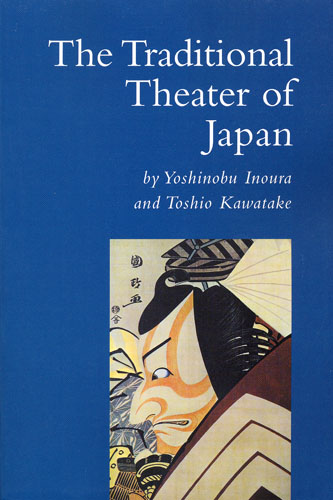
The Traditional Theater of Japan
by Yoshinobu Inoura and Toshio Kawatake
This is the first book in English to present a comprehensive history of Japanese theater, and was written by two Japanese authorities in the field. Beginning with ritualistic Kagura, a theatrical art developed around Shinto shrines well before the 6th century, the discussion proceeds to Gigaku, which originated in China and had Buddhist associations; moves on to Gagaku and Bugaku (court music ad dance); and then to Sarugaku and other prototypes of Noh. Due attention is given the several early phases of Noh—Ennen Noh, Sarugaku Noh, Dengaku Noh, and Shugen Noh—as well as its emergence as a true classical theater and its comic interludes of Kyogen. The discussion continues with the origins and history of the puppet theater Bunraku and the popular theater Kabuki.
For each of these performing arts, a thorough explanation is given and numerous examples cited, all copiously illustrated with monochrome photographs of performances, costumes, masks, and implements. The result is an absorbing panorama in which the history of the Japanese theater comes to life, a valuable book for anyone in interested in Japanese culture or dramatic arts in general.
Yoshinobu Inoura graduated from Tokyo University and taught at Showa Women's College. He is the author of numerous books, among the Nihon Engeki Shi, a monumental and the most authoritative history of the Japanese theater. Toshio Kawatake is a descendant of the great Kabuki dramatist Mokuami; he taught at Waseda University and has written voluminously on the development of Tokugawa theater.
272 pp, 6 x 9, Soft
130 b&w photos, appendixes, index
Theater / Japanese culture
ISBN: 978-1-891640-40-7
$50.00





